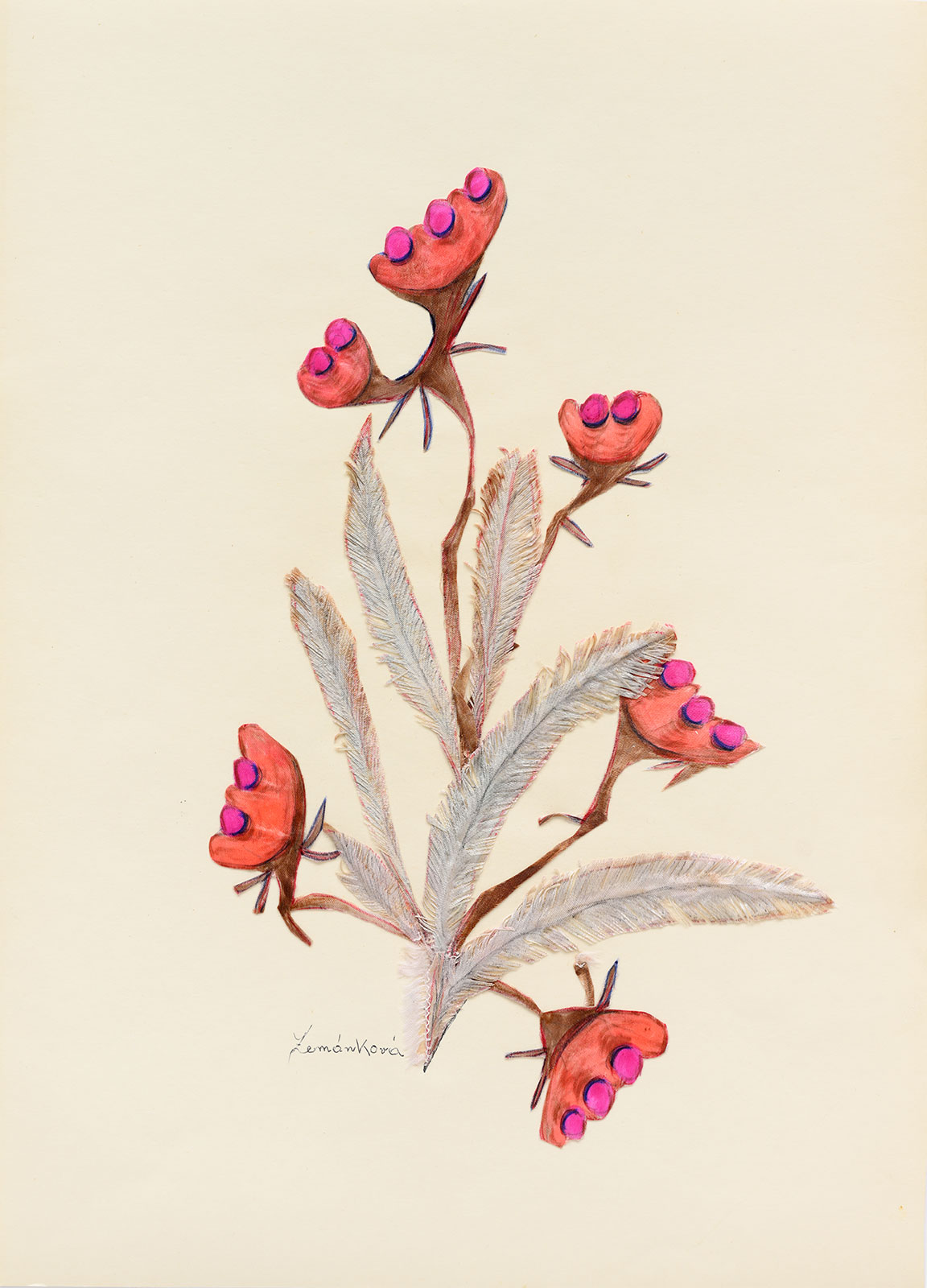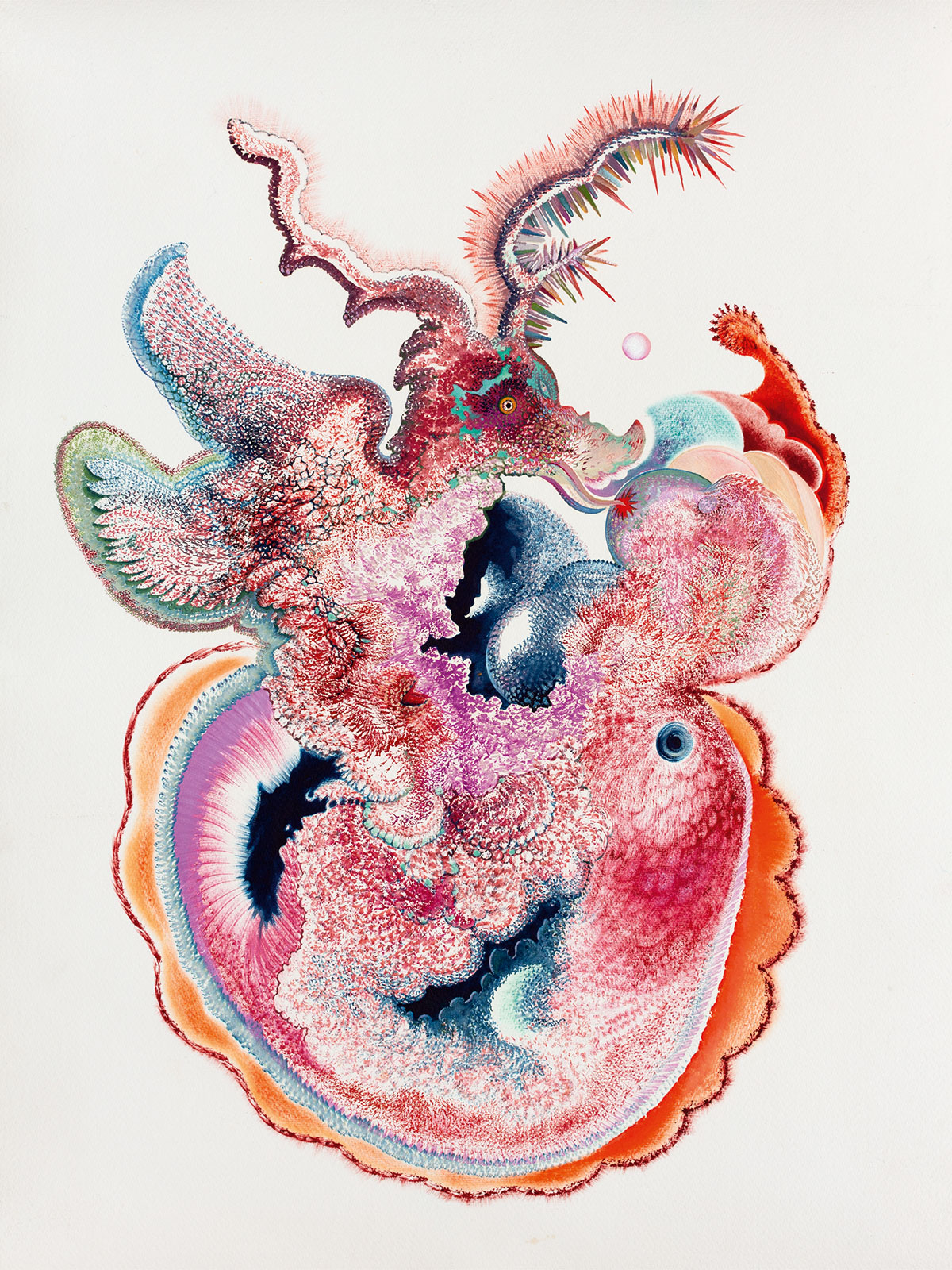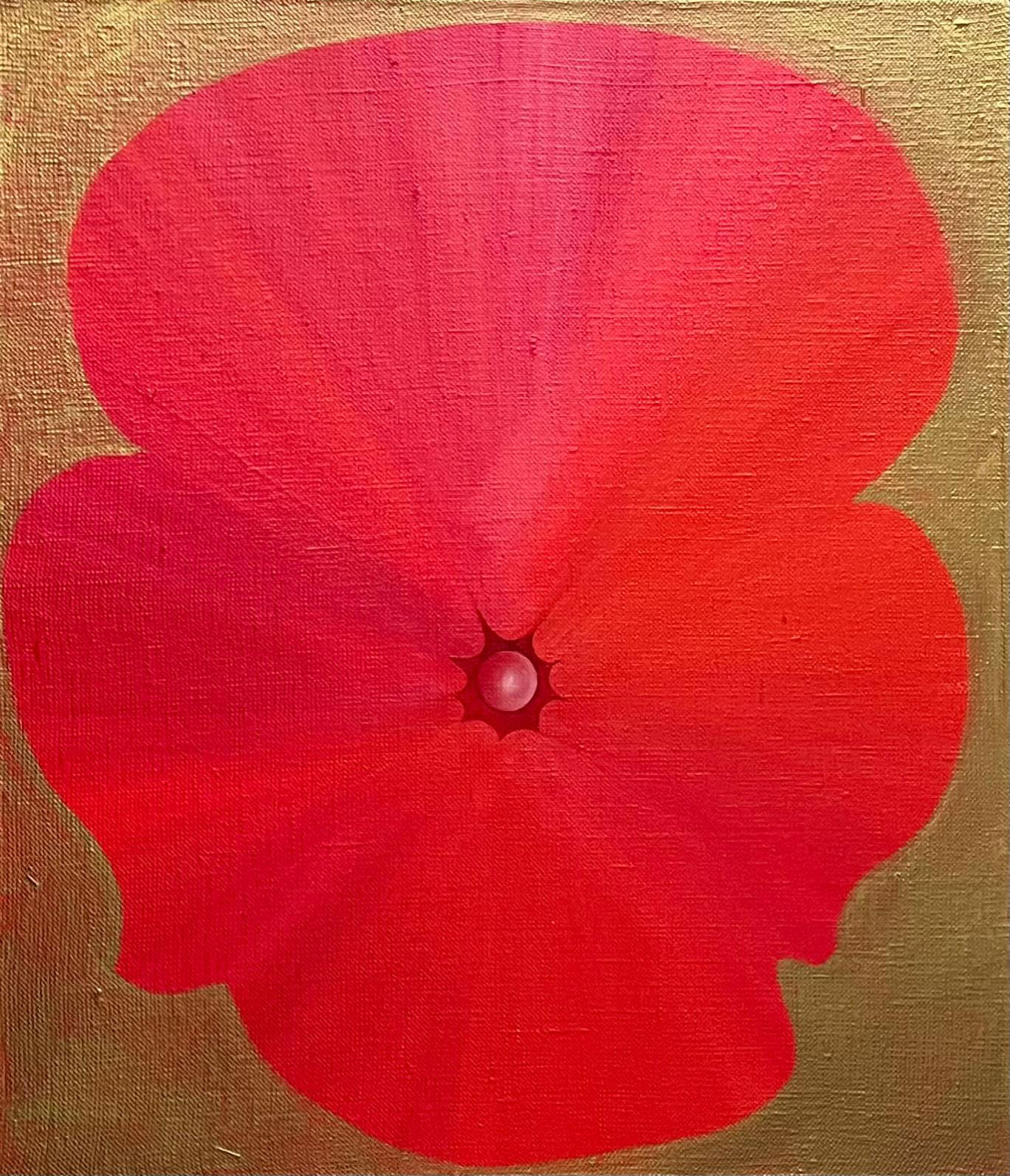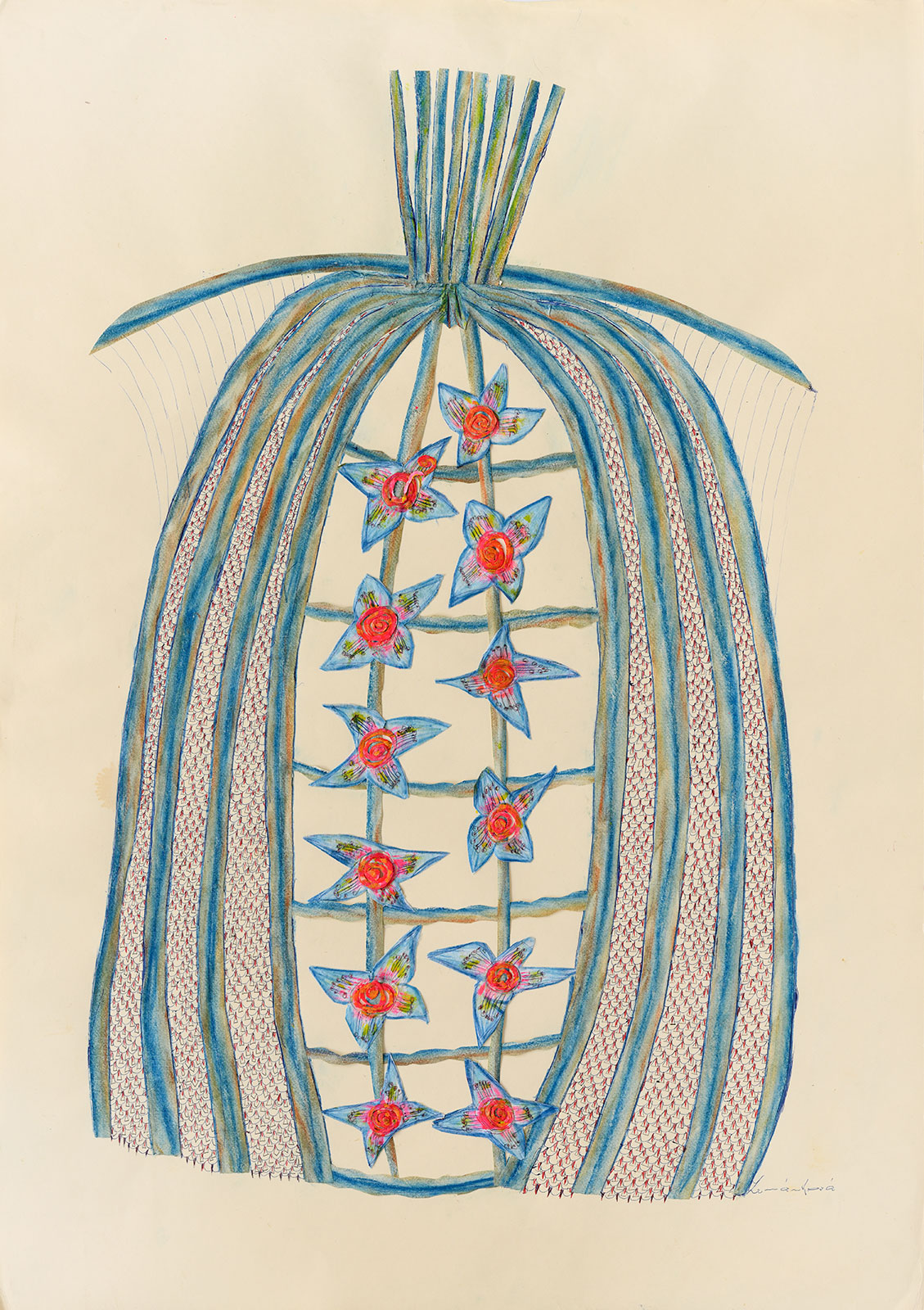
Ostara
Gallery Weekend
Eröffnung: Freitag, 26. April / 18 – 21 Uhr
Samstag, 27. April + Sonntag, 28. April / 12 – 18 Uhr
Was verbindet die beiden Künstlerinnen verschiedener Generationen miteinander? Wie übertragen sie ihre unterschiedlichen historischen und persönlichen Erfahrungen in ihr Werk?
{….} Bilder der Empfängnis, der Keimung, der Entwicklung und der Reifung, aber auch des Verwelkens, des Absterbens und des Todes spielen in den Arbeiten von Anna Zemánková und Veronika Holcová eine zentrale Rolle. In ihren quasi-automatischen, ohne rationale Selbstzensur (zumindest in der Anfangsphase) entstandenen Zeichnungen und Gemälden finden sich die universellen Symbole des Eies und der sprießenden Zweige, aber auch des reinigenden Feuers, {….}. Holcovás glühender Kern und Zemánkovás Feuerzungen verkörpern sowohl die zerstörerische Kraft als auch die unwiderstehliche Anziehungskraft des brennenden Verlangens – den ewigen Drang, das Zusammenspiel von Eros und Thanatos. Die Dualität von Licht und Dunkelheit, von Schönheit und Hässlichkeit, von Sanftheit und Grausamkeit, von Freude und Leid bildet eine mächtige Unterströmung, die den dynamischen und {…} erzählerischen Charakter des Werks beider Künstlerinnen speist.
Auch das Bild der archetypischen Frau, der Hauptfigur in ihren Werken, ist bipolar: Liebhaberin-Mutter. Während das Bild bei Holcová offensichtlich figürlich, aber gleichzeitig unfassbar surreal ist, erscheint sie bei Zemánková nur in Form von abstrahierten Andeutungen, die in die „Blumensprache“ übertragen werden. Eva und Lilith, das Opfer und die Verführerin, Maria Magdalena und die Jungfrau Maria, die Sünderin und die Schmerzensmutter – sie alle sind hier präsent, ebenso wie La Llorona oder Medea, die von der Leidenschaft in den Wahnsinn und ins Verderben getrieben wurde. Die intuitiven Praktiken der beiden Künstlerinnen schwelgen in der Metamorphose von Formen und Gestalten, hinter denen sich Gleichnisse aus ihren eigenen persönlichen Mythologien sowie aus dem kollektiven Unbewussten verbergen. Der schöpferische Akt ist ein kathartisches Ritual, mit dem sie sich von Albträumen, Traumata, belastenden Erinnerungen, aber auch von Vorahnungen und „Visionen“ reinigen. Die Oberfläche eines Blattes Papier ist für sie wie eine Bühne, auf der sich kleine private Dramen ebenso abspielen wie globale Katastrophen – während des schöpferischen Aktes hören das Innere und das Äußere, das Frühere und das Spätere, auf zu existieren. Das Selbst wird mit dem Universum zu einem einzigen Raum ohne Grenzen verwoben.
Terezie Zemánková
Anna Zemánková (1908 – 1986) gilt als eine der wichtigsten Vertreterinnen der Art Brut. 2013 und 2024 wird ihr Werk im internationalen Pavillon der Biennale Venedig gezeigt. Dem voraus gingen seit 1971 internationale Einzel- und Gruppenausstellungen. Zu den wichtigsten gehören 1980 „Outsiders“ in der Hayward Gallery in London und 1981 die São Paulo Art Biennial. Nach ihrem Tod wird ihr Werk weltweit in Museen gezeigt, 1997 im High Museum of Art, Atlanta, USA, 2007 in der Slovak National Gallery, Bratislava, 2011 im Museum Montanelli, Prag, der Saarland Galerie und dem Europäischen Kunstforum Berlin, 2012 im Ryogo Prefectural Museum of Art, Kobe, Japan und dem Hiroshima City Museum of Contemporary Art, Hiroshima, Japan, 2017 in der Collection de l’Art Brut, Lausanne, Schweiz. Es befindet sich in zahlreichen privaten und öffentlichen Sammlungen, darunter Collection de l’Art Brut, Lausanne; Sammlung Arnulf Rainer; The Musgrave Kinley Outsider Art Collection; L’ Aracine; The Museum of Everything; und die Sammlung abcd/Bruno Decharme.
Veronika Holcová (*1973) studierte von 1993-99 an der Akademie der Bildenden Künste Prag. 2002 erhielt sie ein Aufenthaltsstipendium für das Egon Schiele Zentrum, Cesky Krumlov, 2002 für das Schwellenmätteli Bern und 2017 für die Budapest Art Factory. 1997 fand die erste Einzelausstellung statt. Es folgten Einzel- und Gruppenausstellungen in Prag, Zürich, München, Berlin, Düsseldorf, Köln, Wien, Mailand, New York. Singapur, Beijing und Shanghai. Die 2016 von Lóránd Hegyi kuratierte Ausstellung „Intriguing Uncertainties“ im Musée d’Art Moderne de Saint Etienne, Frankreich, und 2018 in „The Parkview Museum“ Singapur – Beijing, verhalf ihr zu großer internationaler Anerkennung. Ihr Werk findet sich neben privaten Sammlungen in der Nationalgalerie Prag.
Ostara
Gallery Weekend
Opening: Friday, April 26 / 6 – 9 pm
Saturday, April 27 + Sunday, April 28 / 12 am – 6 pm
What connects these two artists from different generations? How do they transfer their different historical and personal experiences into their work?
{…} Images of conception, germination, development and maturation, but also of wilting, dieback and death, play a key role in the works of Anna Zemánková and Veronika Holcová. Their quasi-automatic drawings and paintings produced without rational self-censorship (at least in the initial stages) feature the universal symbols of the egg and of sprouting branches, but also of the purging fire {…}. Holcová’s core of incandescence and Zemánková’s tongues of fire embody both a destructive force and the irresistible attraction of burning desire – the eternal urge, the interplay of Eros and Thanatos. The duality of light and dark, beauty and ugliness, gentleness and cruelty, joy and suffering, constitutes a mighty undercurrent that feeds the dynamic and {…} narrative nature of the work of both artists.
The image of the archetypal Woman, the main character in the works of both artists, is also bipolar: lover-mother. While in Holcová’s case the image is evidently figural, although at the same time ungraspably surreal, in Zemánková’s work she appears only in the form of abstracted hints converted into the “language of flowers”. Eve and Lilith, the victim and the temptress, Mary Magdalen and the Virgin Mary, the sinner and Our Lady of Sorrows – they are all present here, as too are La Llorona or Medea who was driven to madness and doom by passion. The intuitive practices of the two artists revel in the metamorphosis of forms and shapes that conceal parables from their own personal mythologies as well as the collective unconscious. The creative act is a cathartic ritual which they use to cleanse themselves of nightmares, traumas, distressing memories, but also premonitions and “visions”. For them, the surface of a piece of paper is like a stage where minor private dramas as well as global catastrophes play out – during the act of creation, the inner and the outer, the sooner and the later, cease to exist. The Self becomes interwoven with the universe into a single space without boundaries.
Terezie Zemánková
Anna Zemánková (1908 – 1986) is considered one of the most important representatives of Art Brut. Her work is and was shown in the international pavilion at the Venice Biennale in 2024 and 2013. This has been preceded by international solo and group exhibitions since 1971. Among the most important were „Outsiders“ at the Hayward Gallery in London in 1980 and the São Paolo Art Biennial in 1981. After her death, her work was shown in museums worldwide, in 1997 at the High Museum of Art Atlanta, USA, in 2007 at the Slovak National Gallery, Bratislava, in 2011 at the Museum Montanelli, Prague, the Saarland Gallery and the European Art Forum Berlin, in 2012 at the Museum of Art Kobe, Japan and the Hiroshima City Museum of Contemporary Art, Hiroshima, Japan, in 2017 at the Collection de l’Art Brut, Lausanne, Switzerland. It is part of numerous private and public collections, including Collection de l’Art Brut, Lausanne; Arnulf Rainer Collection; The Musgrave Kinley Outsider Art Collection; L‘ Aracine; The Museum of Everything; and the abcd/Bruno Decharme Collection.
Veronika Holcová (*1973) studied at the Academy of Fine Arts Prague from 1993-99. In 2002 she received a residency scholarship for the Egon Schiele Center, Cesky Krumlov, in 2002 for the Schwellenmätteli Bern and in 2017 for the Budapest Art Factory. Her first solo exhibition took place in 1997. This was followed by solo and group exhibitions in Prague, Zurich, Munich, Berlin, Düsseldorf, Cologne, Vienna, Milan, New York. Singapore, Beijing and Shanghai. The exhibition „Intriguing Uncertainties“ curated by Lóránd Hegyi shown in 2016 at the Musée d’Art Moderne de Saint Etienne, France, and in 2018 at „The Parkview Museum“ Singapore – Beijing, helped her achieve great international recognition. Her work can be found alongside private collections in the National Gallery in Prague.


